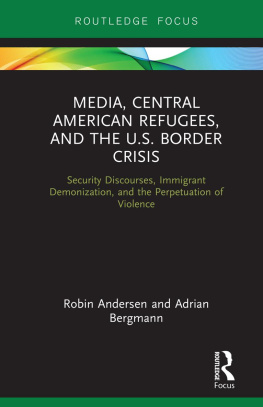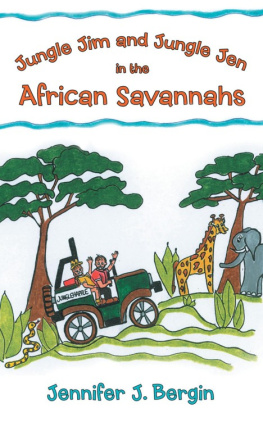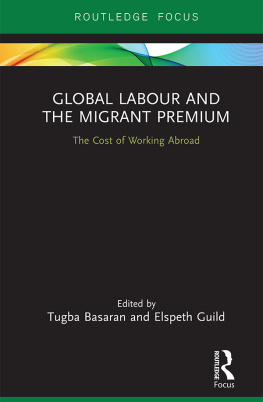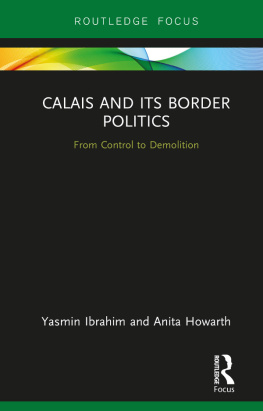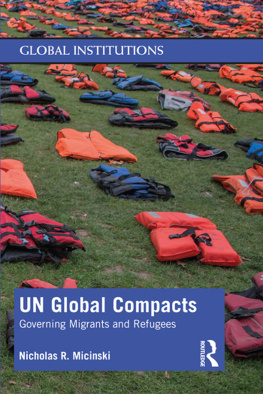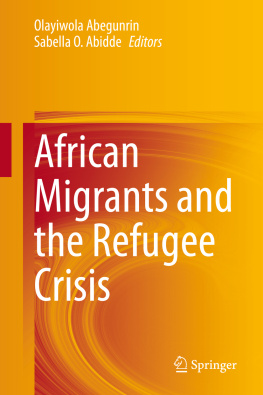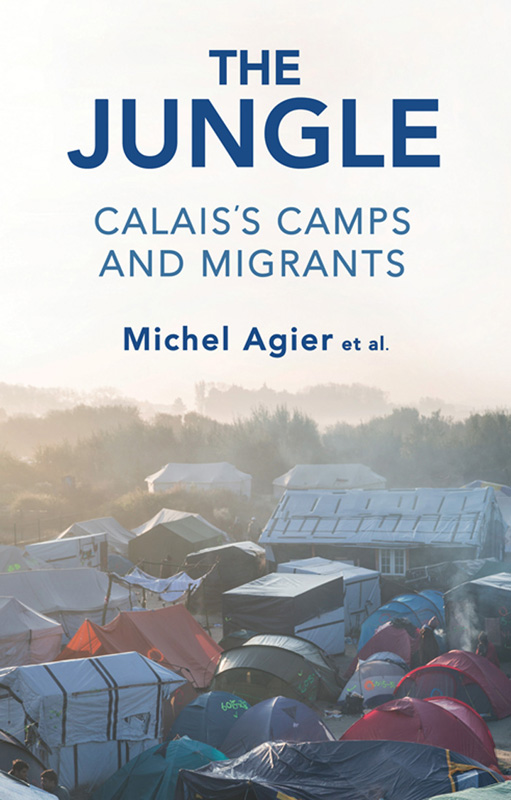Table of Contents
List of figures
Guide
Pages
The Jungle
Calais's Camps and Migrants
Michel Agier
With Yasmine Bouagga, Mal Galisson, Cyrille Hanappe, Mathilde Pette and Philippe Wannesson
With the collaboration of Madeleine Trpanier, Cline Barr, Nicolas Lambert, Sara Prestianni and Julien Saison
Translated by David Fernbach
polity
Copyright Michel Agier, Yasmine Bouagga, Mal Galisson, Cyrille Hanappe, Mathilde Pette and Philippe Wannesson, 2019
This English edition Polity Press, 2019
Polity Press
65 Bridge Street
Cambridge CB2 1UR, UK
Polity Press
101 Station Landing
Suite 300
Medford, MA 02155, USA
All rights reserved. Except for the quotation of short passages for the purpose of criticism and review, no part of this publication may be reproduced, stored in a retrieval system or transmitted, in any form or by any means, electronic, mechanical, photocopying, recording or otherwise, without the prior permission of the publisher.
ISBN-13: 978-1-5095-3060-1
ISBN-13: 978-1-5095-3061-8 (pb)
A catalogue record for this book is available from the British Library.
Library of Congress Cataloging-in-Publication Data
Names: Agier, Michel, 1953- author.
Title: The jungle : Calais's camps and migrants / Michel Agier et al.
Description: 1 | Medford, MA : Polity, 2018. | Includes bibliographical references and index.
Identifiers: LCCN 2018013003 (print) | LCCN 2018029163 (ebook) | ISBN 9781509530632 (Epub) | ISBN 9781509530601 (hardback) | ISBN 9781509530618 (paperback)
Subjects: LCSH: Political refugeesFranceCalais. | Refuge (Humanitarian assistance)FranceCalais. | BISAC: SOCIAL SCIENCE / Anthropology / General.
Classification: LCC HV677.C342 (ebook) | LCC HV677.C342 A45 2018 (print) | DDC 362.89/912830944272dc23
LC record available at https://lccn.loc.gov/2018013003
Typeset in 10.5 on 12pt Sabon
by Toppan Best-set Premedia Limited
Printed and bound in Great Britain by Clays Ltd, Elcograf S.p.A.
The publisher has used its best endeavours to ensure that the URLs for external websites referred to in this book are correct and active at the time of going to press. However, the publisher has no responsibility for the websites and can make no guarantee that a site will remain live or that the content is or will remain appropriate.
Every effort has been made to trace all copyright holders, but if any have been inadvertently overlooked the publisher will be pleased to include any necessary credits in any subsequent reprint or edition.
For further information on Polity, visit our website:
politybooks.com
Illustrations
Photos
- The Calais Jungle, also known as the Pashtun Jungle, destroyed in September 2009
- The Norrent-Fontes encampment, 2016
- Loup Blaster's sycamore in the Galoo squat
- The Tioxide hangar
- The container camp (Centre dAccueil Provisoire), Calais Jungle, October 2016
- Children in the Calais Jungle, February 2016
- A hairdressing salon, Calais Jungle, December 2015
- The Calais Jungle, October 2016
- The Norrent-Fontes encampment, 2016
- Calais Jungle, 25 October 2016, the second day of the evacuation: awaiting departure for the Centres dAccueil et dOrientation
- Calais, 26 October 2016, the Jungle after evacuation and during its destruction
Figures
- Plan of the Sangatte camp in 2002
- Location of encampments, squats and jungles in the Calais region as of March 2015
- The Leader Price camp in March 2015
- The town centre of the Bois Dubrulle encampment
- Plans of the bar (upper left), the mosque (upper right) and the church (lower) of the Tioxide camp, March 2015
- Calais Jungle, October 2015
- Afghan restaurant, Calais Jungle, October 2015
- House of a group of Eritrean women, Calais Jungle, October 2015
- The Darfour is Bleeding courtyard of Sudanese migrants
Maps
- The Schengen area
- Jungles, encampments and localities mentioned
- Deaths at the Franco-British border, August 1999May 2017
Introduction: for a better understanding
On 24 October 2016, the evacuation of the Calais Jungle began. The relevant department of the French interior ministry and the police, along with members of various voluntary organizations, led the occupants of the shantytown camp to coaches that would take them to reception centres whose names and locations they did not know. In the first three days, a little more than 3,000 people were moved in this way. On the third day, the destruction of dwellings began, and also of the communal facilities built during the previous eighteen months of occupation and installation. At the end of the same week, the government authorities announced that the dismantling was finished. In fact, the complete destruction would still take a few more days. Left until last were the containers that the government had decided to place in the middle of the Jungle nearly a year earlier. These were taken apart and removed a few weeks later.
The demolition of the Jungle was seen as a success. It took place at the start of a major election campaign in France (the presidential elections of April and May 2017), in which the existing government sought (without success) to win back an electorate that it had very largely lost. To this end it wanted to show signs of its firmness and humanity, in the official elements of language. Above all, the state sought to demonstrate its ability to suppress the public problem posed by the migrants, through the disappearance of the migrants themselves along with any trace of their local presence, their settlement on the ground. This would be the signal of a strong state, protecting the national territory against undesirable foreigners.
A longer history of the Jungle
). The story that needs to be told is a much longer one in its historical and geographical context, European and regional just as we have to understand what happened in this shantytown or rather a town and a community in the process of coming together that the whole world called the Jungle, and where, at least at one point, 10,000 people lived. What crazy mechanisms enabled Europe, and in particular France and the United Kingdom, to invent and manufacture, then destroy, this unnameable place? So unnameable that fear was further intensified by calling it a Jungle, taking up, distorting and above all re-signifying the Pashtun word djangal (which, in its original language, simply means a bit of forest) so as to Westernize it a bit, and thus designate it from this point of view, French and European, as a negatively exotic and disturbing place, more distant than it is in reality, and less human.
). At the same time, to take Calais as a case study means describing an example of the European crisis in general.
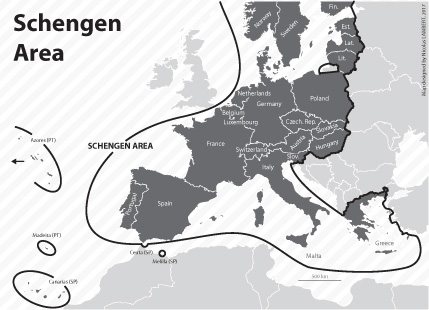
The Schengen area.
Europe and the migration question
The year 2015 was marked by an increase in the number of refugees entering European territory. The figure reached over a million individuals. There then followed a brief period in which the determination of these refugees, combined with the interests of certain member states, made it possible to reverse the trend and create what would be known as the Balkan corridor, which offered a safe and rapid passage for refugees from Greece towards Austria and Germany. But this corridor began to close in November 2015, when at Idomeni, on the border between Macedonia and Greece, an arbitrary sorting of entries began, allowing only individuals of Syrian and Iraqi nationality to cross.


